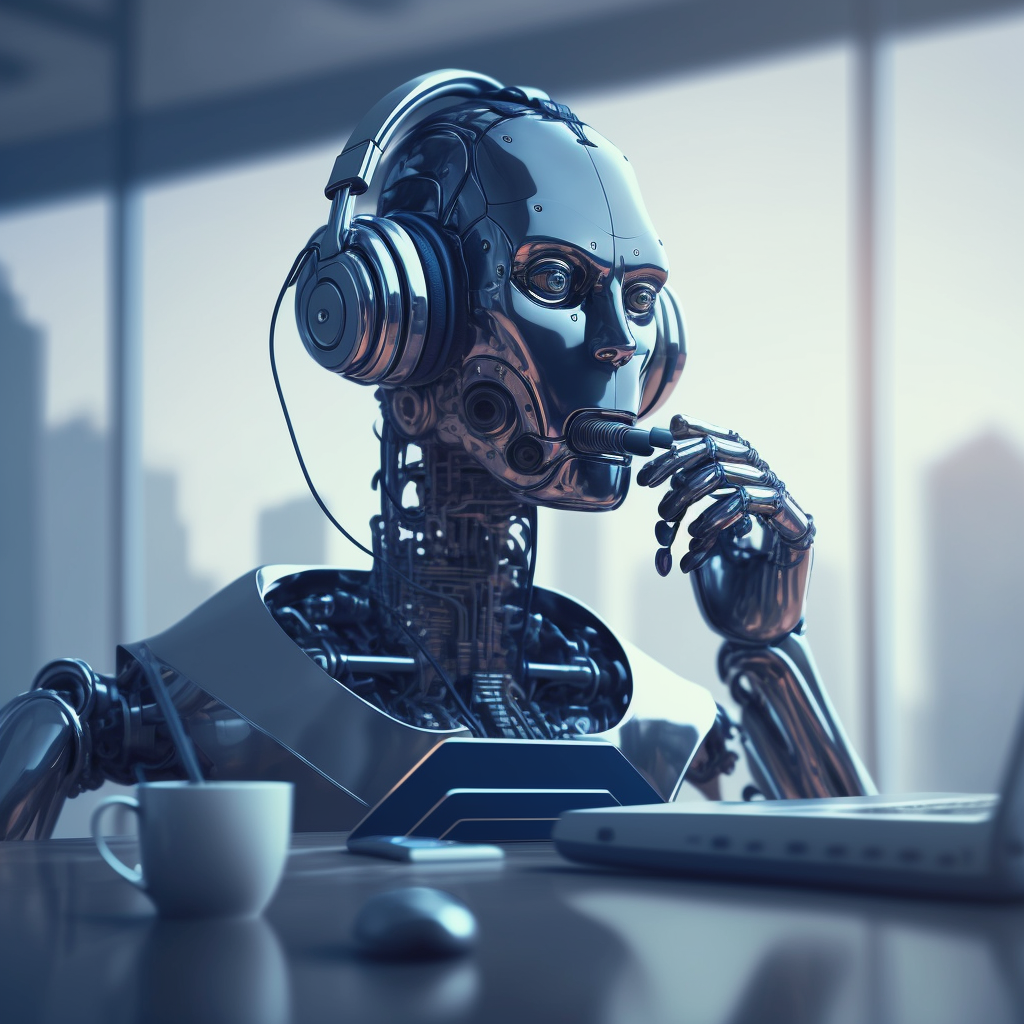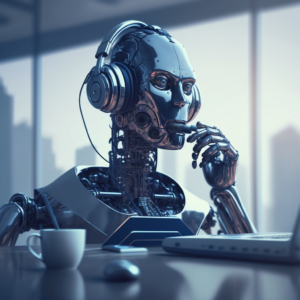What is Digital Transformation?
If you aren’t sure what digital transformation is, here is a good definition. Digital transformation is the process of using digital technologies to create new or modify existing business processes, products, and services. One of the digital technologies I talk about is Laserfiche ECM which helps organizations replace paper processes with digital processes. Or as I say, help you go more paperless.
What is Artificial Intelligence (AI)?
The media is on fire right now talking about this new technology introduced as ChatGPT. It is everywhere. And companies such as Google, Microsoft, and many others are falling all over themselves trying to get on the bandwagon. But did you know this is not something really new?
According to Wikipedia, you know, the site of all knowledge, states that AI dates back to the 1940s. When I went to college at the University of MN, it was a hot topic. That was a little after the ’40s. Our professors were saying this would be the next big thing. And they were right just a few decades off.
So, what is it? Here is a definition: Artificial intelligence is the simulation of human intelligence by machines, especially computer systems, such as problem-solving, natural language processing, and machine learning. That is maybe a little hard to understand. To put it in simpler terms: AI is when machines act like people. Computers can be taught to solve problems, understand languages, and learn from their experiences.
What is Chat GPT?
ChatGPT is a natural language processing (NLP) system. It uses artificial intelligence to generate human-like conversations. It is designed to interact with users through text-based conversations.
What Business Uses does Chat GPT have?
And it can be used in a variety of applications, such as customer service, virtual assistants, and chatbots. Here is a short list:
- Generating automated content
- Proofreading text
- Summarizing documents
- Generating unique content for marketing
- Creating blog posts
- Writing newsletters
- Generating automated customer service responses
- Providing customer support
What is the difference between Chat GPT and a More Generic AI application?
ChatGPT is specifically designed to interact with users through text–based conversations. While more generic AI applications are designed to be used for a variety of tasks. For example, more generic AI applications can be used for image recognition, natural language processing, and other applications. ChatGPT is focused on conversational AI and is optimized for this task. In other words, you can ask chatgpt a question and it can respond with an answer. Whereas other AI applications will do a specific task such as finding important information found a document.
ChatPGT is conversational and that is great, it has a lot of applications in the business world.
Using AI in Other Business Applications
The technology behind ChatGPT, the artificial intelligence technology also has a lot of applications that can help organizations with their digital transformation. One example is capturing data off of a document.
Example of Capturing Data Without AI
 Several years ago we were working with a financial service organization. We were helping them automate the processing of agriculture loans and crop insurance applications. One task that was very time-consuming was analyzing the crop plans that the farmer submitted. They were a text document that had what products they were planning to plan, what areas, and the number of acres. These were not structured documents, the text would be any place on the page. The farmer is listed often by location on their farm, ie section x and it might say 75 acres of corn, oats – 90, and the rest of the section is wheat.
Several years ago we were working with a financial service organization. We were helping them automate the processing of agriculture loans and crop insurance applications. One task that was very time-consuming was analyzing the crop plans that the farmer submitted. They were a text document that had what products they were planning to plan, what areas, and the number of acres. These were not structured documents, the text would be any place on the page. The farmer is listed often by location on their farm, ie section x and it might say 75 acres of corn, oats – 90, and the rest of the section is wheat.
One lady had been processing them by hand for years. She would in this example tabulate those acres of corn, and oats and subtract them from 640 acres in a section and save those numbers, and then continue reading through the document finding the other sections and how much of each product was planned.
We automated this using Lasefiche workflow, OCR’ing the document, and using complicated pattern-matching syntax to capture the data. This was complicated and took a good amount of time to program. But it was very accurate and fast.
How AI Would Help That Project
If we had ChatGPT at the time, we could have come up with a query using chatgpt prompts something like this: “I am going to give some text to read and I want you to find corn, beans, wheat, and oats. And next to those items is a number grab that two and then but in a spreadsheet. Here is the text … “. And the ai chatbot would give you the results.
This would work for a document or two but it you wanted to do a number of, it would be inconvenient. What I could do now is use Laserfiche to bring in an image and use an API call using Laserfiche workflow, to call an artificial intelligence application to process the text automatically.
Real World AI Application – Invoice Capture
We are currently doing something similar. We use a new artificial intelligence cloud computing application that allows us to intelligently capture critical data off of an invoice. The automation we have created using Laserfiche workflow allows the user to drop an invoice into a folder, it is imported and sent to the ai. The AI uses the invoice language model to capture the invoice number, vendor number, vendor name, due date, and invoice total of the document. And returns the fields of data to be used in the approval process and then pushed to the accounting system. The power of artificial intelligence reduces data entry by at least ninety percent.
Automating Invoice capture with AI

